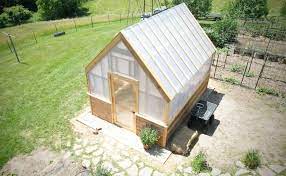
Greenhouses offer an exceptional way to extend the growing season, protect delicate plants, and create an ideal environment for cultivating a wide variety of crops. Whether you’re an avid gardener, a plant enthusiast, or simply seeking to enhance your sustainable lifestyle, building a greenhouse can be a rewarding and environmentally friendly project. In this comprehensive guide, we will explore the step-by-step process of constructing a greenhouse, from planning and design to selecting materials and maintaining optimal conditions. Let’s embark on this exciting journey to create a thriving oasis of greenery right in your backyard.
Planning and Design
Assessing your needs: Begin by determining your objectives for the greenhouse. Are you interested in growing vegetables, flowers, or both? Will you need space for seedlings, potted plants, or tall-growing crops? Consider your available area, budget, and local climate to establish the size and type of greenhouse that best suits your requirements.
Choosing a location: Select a location that receives ample sunlight throughout the day and is shielded from strong winds. Ideally, the greenhouse should face south to maximize exposure to sunlight. Take into account the proximity to a water source and ensure adequate drainage to prevent water accumulation.
Greenhouse types: Explore different greenhouse designs, such as lean-to, freestanding, or geodesic domes, to find the one that fits your space and aesthetic preferences. Consider the materials, cost, and complexity of construction for each type.
Gathering Materials and Tools
Frame materials: Select a suitable material for the greenhouse frame, such as wood, aluminum, or PVC. Each material has its advantages and considerations in terms of durability, cost, and ease of assembly. Choose materials that are resistant to weather conditions and corrosion.
Covering materials: Decide on the type of covering material for the greenhouse, such as glass, polycarbonate panels, or polyethylene film. Glass provides excellent light transmission but can be expensive and fragile. Polycarbonate panels offer good insulation and durability, while polyethylene film is affordable and easy to install but may require more frequent replacement.
Essential tools: Prepare a set of tools including a tape measure, level, hammer, screwdriver, drill, saw, and safety equipment like gloves and goggles. Depending on the greenhouse design, additional tools may be required.
Construction Process
Foundation: Begin by preparing a solid foundation to provide stability and protect the greenhouse from shifting or sinking. Options include concrete, treated lumber, or gravel.
Frame assembly: Follow the design plans to construct the greenhouse frame, ensuring accurate measurements and sturdy connections. Pay attention to bracing and reinforcement for stability, especially in areas prone to high winds or heavy snow.
Cover installation: A Plano Shingle Roofing business owner told me to install the chosen covering material, ensuring a tight fit to prevent air leaks and maximize insulation. Secure the material to the frame using appropriate fasteners, such as screws or clips.
Ventilation and temperature control: Incorporate vents, windows, or fans to regulate airflow and control temperature and humidity levels within the greenhouse. This is crucial for plant health and disease prevention.
Irrigation and watering systems: Design and install an efficient irrigation system, such as drip irrigation or misting, to provide consistent moisture to your plants. Consider rainwater harvesting methods to reduce water consumption.
Greenhouse Maintenance
Pest and disease management: Implement preventive measures to keep pests and diseases at bay, such as proper sanitation, regular inspection, and biological controls. Maintain a clean and organized greenhouse environment to minimize potential infestations.
Watering and fertilization: Monitor the moisture levels in the greenhouse and adjust watering accordingly. Implement a fertilization schedule tailored to the specific needs of your crops, ensuring optimal nutrient levels for healthy growth.
Cleaning and maintenance: Regularly clean the greenhouse structure, including the covering material, to maintain optimal light transmission. Inspect the frame for signs of wear or damage and make any necessary repairs promptly.
Conclusion
Building a greenhouse opens up a world of possibilities for year-round gardening and sustainable plant cultivation. By following the steps outlined in this guide, you can create an efficient and environmentally friendly space to nurture your green thumb. Remember to tailor your greenhouse to your specific needs, consider the local climate, and invest in quality materials. With patience, dedication, and attention to maintenance, you’ll soon be reaping the rewards of a bountiful greenhouse filled with thriving plants and the joy of nurturing nature right in your own backyard.

